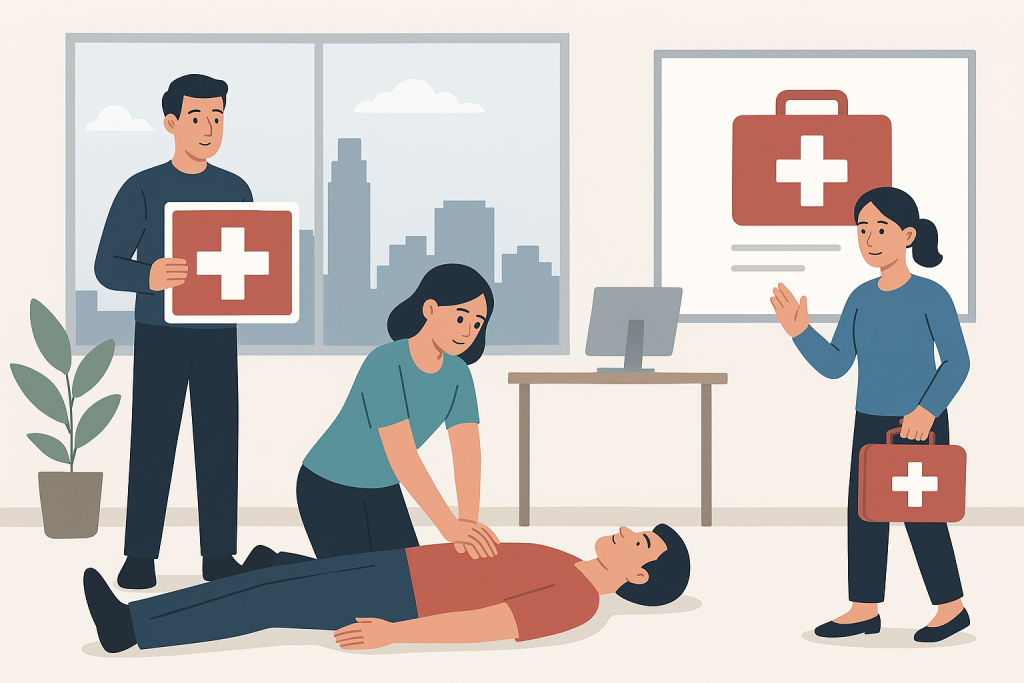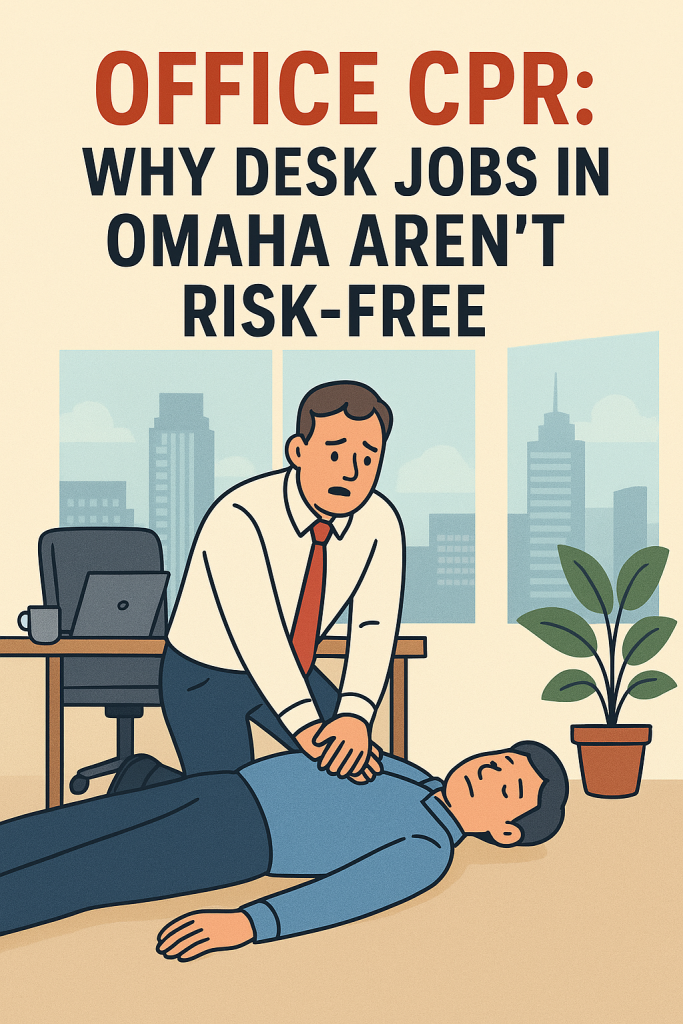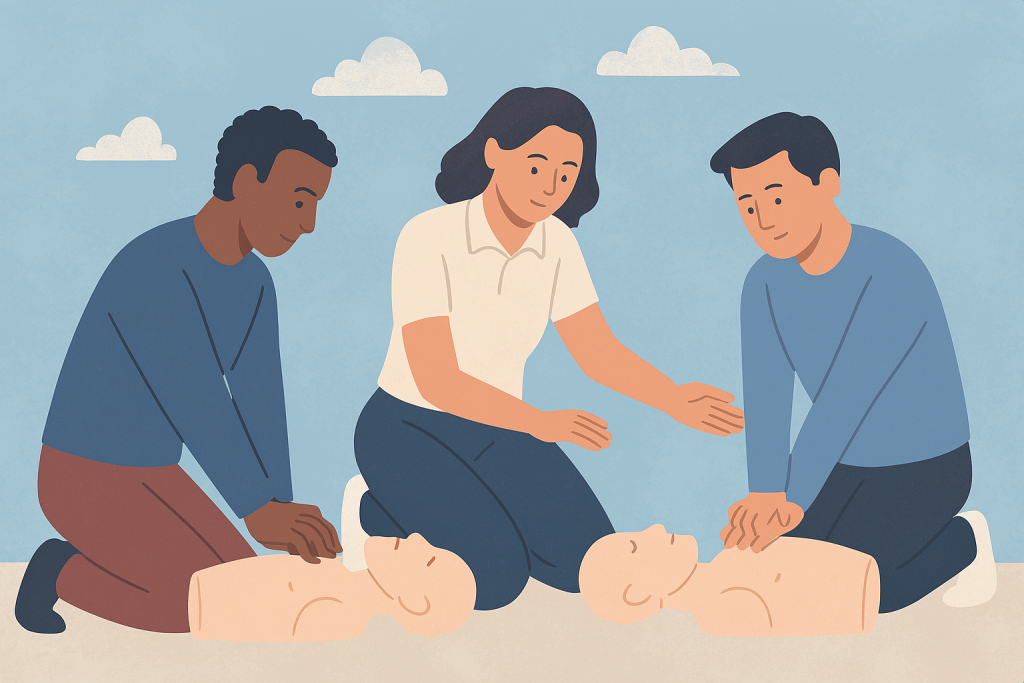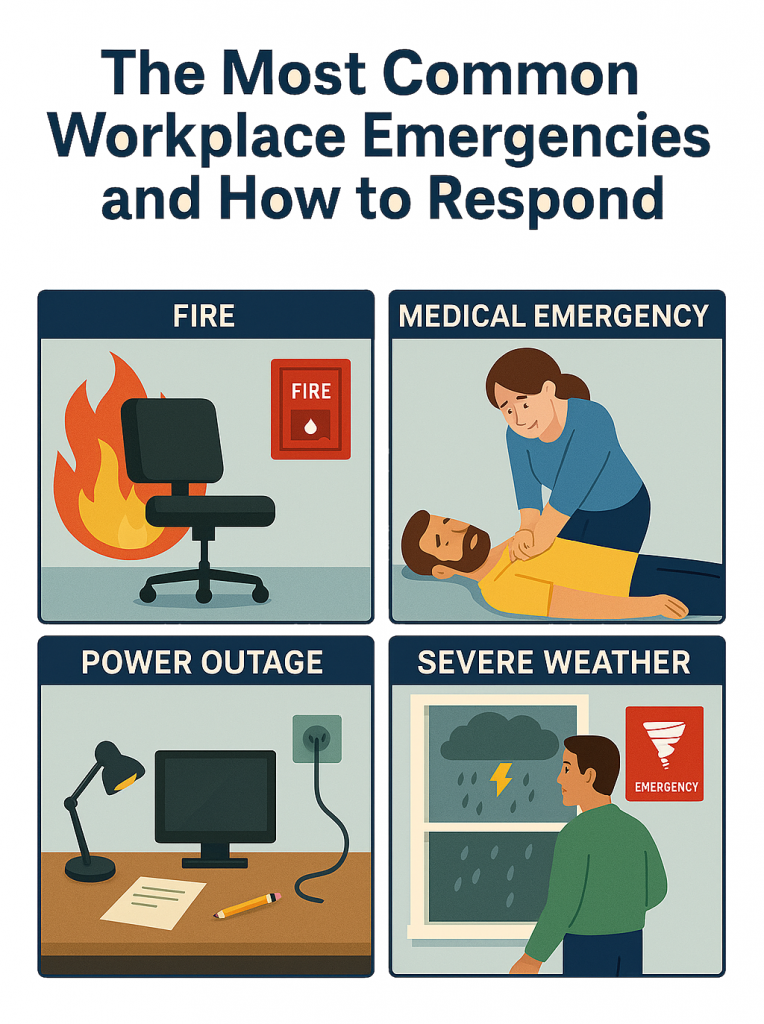Accidents can happen anywhere — even in the safest workplaces. Whether you work in an office in Omaha, a warehouse, or out in the field, having employees trained in basic first aid can make all the difference in an emergency. Immediate, informed action can save lives, reduce the severity of injuries, and foster a culture of safety and care within your organization.
Here are 10 essential first aid skills every employee should know:
1. CPR (Cardiopulmonary Resuscitation)
CPR is one of the most important lifesaving skills anyone can learn. It helps keep blood and oxygen circulating when someone’s heart has stopped. Heartland Safety and Wellness offer CPR certification courses that teach proper hand placement, compression depth, and rescue breathing techniques.
2. How to Use an AED (Automated External Defibrillator)
AEDs are commonly found in workplaces, schools, and public buildings throughout Omaha. Employees should know where the nearest AED is located and how to use it to deliver a life-saving shock to someone experiencing cardiac arrest.
3. Choking Response
A quick response to choking can prevent tragedy. Learning how to perform abdominal thrusts and back blows can dislodge an object and save someone’s life — especially in office break rooms or cafeterias.
4. Treating Burns
From hot coffee spills to industrial accidents, burns are among the most common workplace injuries. Employees should know how to cool a burn with running water, cover it with a sterile dressing, and avoid applying creams or oils.
5. Bleeding Control
Knowing how to apply direct pressure, elevate the injured area, and use a tourniquet (if trained) can help stop severe bleeding until professional medical help arrives.
6. Recognizing and Treating Shock
Shock can occur after a severe injury or emotional trauma. Signs include pale skin, rapid breathing, and confusion. The right response — keeping the person warm, calm, and lying down — can stabilize them while waiting for emergency responders.
7. Handling Sprains and Fractures
Employees should understand the R.I.C.E. method: Rest, Ice, Compression, and Elevation. Knowing how to immobilize a suspected fracture or sprain can prevent further injury.
8. Dealing with Allergic Reactions
Anaphylaxis can occur suddenly and without warning. Every workplace should know how to identify symptoms like swelling, difficulty breathing, and hives — and how to use an epinephrine auto-injector if one is available.
9. Recognizing Heart Attack and Stroke Symptoms
Quick recognition saves lives. Employees should learn the FAST acronym for stroke (Face drooping, Arm weakness, Speech difficulty, Time to call 911) and know the common signs of a heart attack such as chest pain, sweating, or nausea.
10. Basic Wound Care
Proper cleaning, dressing, and bandaging of cuts or scrapes can prevent infection and speed up healing. Having a well-stocked first aid kit accessible in your Omaha workplace ensures employees can respond promptly to minor injuries.
Building a Safer Workplace in Omaha
Providing first aid training in Omaha isn’t just a regulatory requirement — it’s an investment in your team’s well-being. Contact us today! We can help ensure that every employee feels confident and prepared to handle emergencies.
When employees know how to respond quickly and effectively, they don’t just save lives — they build a stronger, more caring workplace culture.
Ready to make your Omaha workplace safer?
Consider scheduling a first aid and CPR training session for your team today. It’s one of the best steps you can take toward creating a healthier, more resilient workforce.










